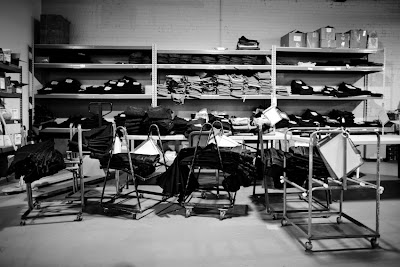 What is Selvedge?
Selvedge, also referred to as selvage, is a type of denim.
What is Selvedge?
Selvedge, also referred to as selvage, is a type of denim.The term refers to the “self-edge”, a finished edge created by the production process. Selvedge is produced on old-style shuttle looms.
Shuttle looms are antique tools that were outdated by newer technologies in the 1950′s. Jeans today are mostly made on projectile looms which are more cost efficient for manufacturers.
Projectile looms rose to the industry standard because of market forces and the increasing popularity of jeans in the 1950′s and 1960′s. More material could be created for less money with projectile looms.
The trade-off was quality and strength of material which was passed on to the end consumer. As the major players like Levi’s and Lee upgraded their looms, these old-style looms eventually ended up in Japan.
Denim purists value the shuttle looms for the higher quality that can be achieved. Basically, with a shuttle loom, the weaving process involves a cross-thread that goes back and forth as one continuous thread to create the fabric. This results in a finished edge that will not fray because the cross-threads, or weft, double back on themselves. A superior strength fabric is created.
This differs from projectile looms which use multiple threads, a new one for each crossing. This results in frayed edges and a denim of lower quality.
Selvedge denim is one of the finest denims that can be used in jeans production today and the price indeed reflects that. The weaving process takes longer to complete but achieves a tightly woven, heavier weight fabric that is built to last. In fact, one of the ways to distinguish vintage jeans of the past is by looking for this trademark characteristic. Selvedge denim produces a cleaner edge that seams together in a distinctive manner.
Selvedge denim is also unique in that denim produced on shuttle looms is irregular by nature. As the denim ages these irregularities manifest making each pair unique to the individual wearer.





























